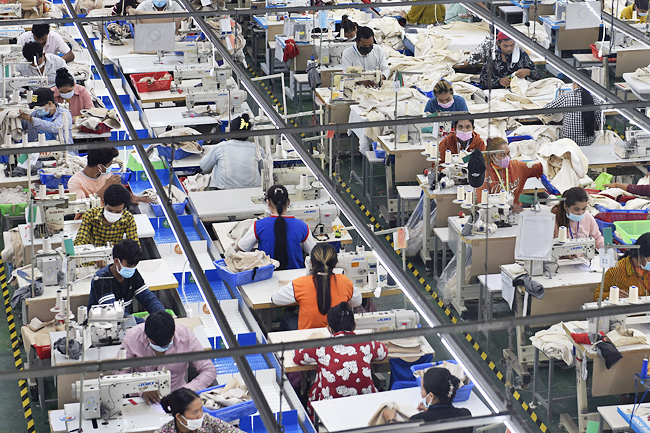PHNOM PENH (XINHUA) – One year on, the Regional Comprehensive Economic Partnership (RCEP) trade deal and the Cambodia-China Free Trade Agreement (CCFTA) have injected a vital impetus to Cambodia’s trade growth in the post COVID-19 pandemic era, an official and experts said.
Cambodia’s trade with RCEP member countries was valued at USD24 billion during the January-September period of 2022, up 11-per-cent year-on-year, while the kingdom’s bilateral trade with China also increased in the past year, a government report showed.
Cambodian Ministry of Commerce Undersecretary of State and Spokesman Penn Sovicheat said Cambodia’s 2022 trade growth is moderate because the kingdom and other countries alike have just recovered from the COVID-19 crisis, but he believes that the growth will be higher in 2023 and beyond thanks to the RCEP and CCFTA deals.
“Both RCEP and the CCFTA are catalysts for our long-term and sustainable trade growth and the two trade pacts are a magnet to attract more foreign direct investments (FDIs) to our country,” he told Xinhua. “More FDIs mean more new capital and more new job opportunities for our people.”
Sovicheat said the two FTAs are quite beneficial to Cambodia as both have given the Southeast Asian country larger market access with preferential tariffs.

“For us, we stand to gain a lot from these FTAs because although Cambodia is a small country, we’ve already become a part of regional and global supply chains, we’ve already specialised in producing garment, shoes, travel goods, part components, and bicycles for export to the world,” he said.
“On top of these, our agricultural products, particularly milled rice, have already become well known in the markets of Europe, the United States, and China,” he added. The spokesman said the two pacts have also helped Cambodia diversify its exports and further integrate into regional and global economy.
“Both trade pacts could help Cambodia graduate from its least developed country status, likely by 2028 and achieve its goals of becoming an upper-middle income country in 2030 and a high-income nation by 2050,” he said.
Phnom Penh-based Asian Vision Institute research fellow Thong Mengdavid agreed that both trade deals are key contributors to boosting Cambodia’s economic growth and international trade in the post-pandemic era. “Both FTAs have also boosted the development of the fledgling e-commerce industry in Cambodia during the peak of COVID-19 pandemic,” he told Xinhua.
Mengdavid said the increasing trade volume between Cambodia and China is a result of good relations, commitment and the same aspiration for building a “community with a shared future” between the two countries. He added that RCEP has allowed its members to conduct trade, investment and mobilisation of resources and materials in freer and friendlier methods and with less restriction, promoting productivity, economic resilience, and regional economic recovery.






